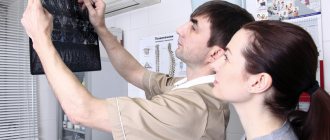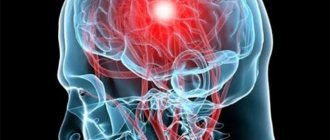Polyneuropathy, or peripheral neuropathy, occurs as a result of damage to the peripheral nerves and often results in symptoms such as weakness, numbness and pain, usually in the arms and legs. But polyneuropathy can also affect other areas of the body. Peripheral neuropathy may develop in one nerve (mononeuropathy), two or more nerves in different areas, or may involve many nerves (polyneuropathy).
The peripheral nervous system transmits information from the brain and spinal cord (central nervous system) to the rest of the body. Peripheral neuropathy can result from traumatic injuries, infections, metabolic disorders, hereditary causes, and exposure to toxins. One of the most common causes of polyneuropathy is diabetes mellitus.
Patients with peripheral neuropathy typically describe pain as a tingling or burning sensation. In many cases, symptoms decrease if compensation occurs for the underlying disease.
Each nerve in the peripheral nervous system has a specific function, so symptoms depend on the type of nerve that is damaged. Nerves are divided into:
- Sensory nerves that receive sensations from the skin, such as temperature, pain, vibration, or pressure
- Motor (motor) nerves that control muscle movement
- Autonomic nerves that control functions such as blood pressure, heart rate, digestion, and bladder function
Symptoms
Symptoms of polyneuropathy may include:
- Gradual onset of numbness and tingling in the legs or arms that may spread up the arms and legs
- Sharp stabbing or burning pain
- Increased sensitivity to touch
- Lack of coordination and falling
- Muscle weakness or paralysis if motor nerves are damaged
If autonomic nerves are involved, symptoms may include:
- Heat intolerance, as well as changes in sweating
- Digestive, bladder, or bowel problems
- Changes in blood pressure, which may cause dizziness
Infection of the central nervous system
Magnetic resonance imaging (MRI) of the brain reveals demyelinating lesions in some patients with CKD, despite the great rarity of cerebral or cerebellar symptoms in this population. At the same time, according to the results of one of the studies, demyelinization of the visual pathways, ascertained by the prolonged latency of the visual excitatory potentials, was observed in half of such patients. 5–30% of these patients also show symptoms of cranial nerve damage. It is important to note that clinical symptoms of cerebral origin, as well as brain lesions behind MRI findings in CKDP, can be recognized after the assessment of immunoglobulins.
Causes
A number of factors can lead to the development of neuropathy, including:
- Alcoholism. A poor diet can lead to vitamin deficiencies.
- Autoimmune diseases. These include diseases such as Sjögren's syndrome, systemic lupus erythematosus, rheumatoid arthritis, Guillain-Barré syndrome, chronic inflammatory demyelinating polyneuropathy and necrotizing vasculitis.
- Diabetes. More than half of people with diabetes develop some type of neuropathy.
- Exposure to poisons. Toxic substances include heavy metals or chemicals.
- Medicines. Some medications, especially those used to treat cancer (chemotherapy), can cause peripheral neuropathy.
- Infections. These include some viral or bacterial infections, including Lyme disease, shingles, Epstein-Barr virus, hepatitis C, leprosy, diphtheria, and HIV.
- Hereditary diseases. For example, a disease such as Charcot-Marie disease is a hereditary type of neuropathy.
- Injury or compression on a nerve. Injuries such as car accidents, falls, or sports injuries can damage or even sever peripheral nerves. Nerve compression can occur when peripheral nerves are continuously impacted.
- Tumors. Malignant and benign tumors can damage or put pressure on nerves.
- Vitamin deficiency. B vitamins, including B-1, B-6 and B-12, vitamin E and niacin are important for nerves.
- Bone marrow diseases. These include the presence of an abnormal protein in the blood (monoclonal gammopathies), multiple myeloma, lymphoma and amyloidosis.
- Other diseases. These include kidney disease, liver disease, connective tissue disease and thyroid disease (hypothyroidism).
Complications of polyneuropathy may include
- Burns and skin injuries. If there is numbness in parts of the body, the patient may not feel temperature changes or pain.
- Infections. The legs and other areas of the body with reduced sensation may become unnoticed. It is necessary to monitor the integrity of the skin, especially if you have diabetes, since even minor damage to the skin can lead to tissue infection.
Classic chronic inflammatory demyelinating polyneuropathy
Classical CKD is characterized by the development of symmetrical weakness of the proximal and distal end organs, which progresses over at least 2 months. It is also associated with sensitive disorders, decreased or impaired tendon reflexes, displacements of the spinal cord (SMR), changes typical for demyelinization during Electrophysiological observations and signs of demyelization following biopsy results. This disorder can be recurrent or chronically progressive, and remains typical for diseases of the young age.
The fragments of this disease are increasingly being recognized and have been studied in various clinical studies, and several expert groups have identified the clinical significance of this variant of polyneuropathy (Table 1).
In all cases, it is important to base the diagnosis on clinical symptoms and the results of electrophysiological studies, since the need for additional CMR and biopsies varies depending on the level of clinical diagnostics. accuracy, which ranges from possible to accurate. Two remaining conditions are necessary to establish a clear diagnosis using the American Academy of Neurology criteria rather than the broader criteria of Saperstein et al. and the recommendations of the Group for the identification of causes and treatment of inflammatory neuropathies. Classic CKD responds well to treatment with corticosteroids, which helps in its differentiation from other forms of swelling demyelinating polyneuropathies. Table 1. Diagnostic criteria for CDDP
| Signs | AAN criteria* | Saperstein criteria | INCAT criteria** |
| Clinical evolution | Motor and sensory deficits resulting from learning more than one end | Great: symmetrical weakness of the proximal and distal ends of the limbs; mali: including weakness or sensitive deficit in the distal parts | Progressive or recurrent motosensory deficit from acquisition of more than one end |
| Trivality (months) | 2 or more months | 2 or more months | More than 2 months |
| Reflex | Decreased or daily | Decreased or daily | Decreased or daily |
| Results of electrophysiological studies | Detection of 3 of the 4 lower criteria: partial block of conduction of 1 and more motor nerves, decreased conductivity of 2 and more motor nerves, prolonged distal latency of 2 and more motor nerves iv, the latency of F-branch 2 is prolonged and there are more motor nerves or a variety of these nerves | 2 of 4 electrophysiological criteria AAN | Partial conduction block of 2 or more motor nerves and pathological conduction fluidity or distal latency or F-wave latency in 1 other nerve; or, due to the presence of partial conduction block, pathological conduction fluidity, distal latency or F-wave latency in 3 motor nerves; or electrophysiological data to confirm the presence of demyelinization in 2 nerves plus histological evidence of the remaining |
| construction and installation work | The number of leukocytes is over 10 cells/mm3; negative results of venereological investigations; increase in protein level (additional criterion) | Rhubarb protein over 45 mg/dl; number of leukocytes over 10 cells/mm3 (additional criterion) | SMR analysis is recommended, but not obligatory |
| Biopsy results | Evidence for the benefits of demyelinization and remyelinization | Signs of demyelinization are important; the presence of fire is not certain | The procedure is not obligatory, except for the evidence of electrophysiological damage in 2 motor nerves |
| * American Academy of Neurology. ** Group of development of causes and treatment of inflammatory neuropathies. | |||
Diagnostics
When diagnosing polyneuropathy, a doctor may be primarily interested in answers to the following questions:
- Does the patient have any medical conditions such as diabetes or kidney disease?
- When did the symptoms begin?
- Were the symptoms constant or sporadic?
- How severe are the symptoms?
- What causes symptoms to increase or decrease?
- Did anyone in the patient's family have similar symptoms?
- The doctor needs a complete medical history. The doctor will review the patient's medical history, including symptoms, lifestyle, exposure to toxins, bad habits, and family history of neurological diseases.
- During a neurological examination, the doctor can check tendon reflexes, muscle strength and tone, the ability to feel certain sensations, and coordination.
The doctor may order an examination
- Imaging or MRI tests can detect various diseases (including tumors).
- Neurophysiology. Electromyography records electrical activity in muscles, which can help determine whether symptoms, including weakness, are caused by muscle tissue damage or nerve damage. ENMG checks the conduction of impulses along the nerves and allows you to determine the degree of damage to the nerve fibers. Neurophysiological studies of the autonomic nervous system may also be performed - sensory tests that record how the patient feels touch, vibration, cold and heat.
- Nerve biopsy. A doctor may recommend removing a small portion of a nerve, usually a sensory nerve, to examine morphological changes in the nerve to determine the cause of the nerve damage.
- Skin biopsy. In this test, a small portion of skin is removed to examine the number of nerve endings. A decrease in the number of nerve endings indicates neuropathy.
- Laboratory research methods are necessary to exclude various diseases, such as diabetes mellitus, autoimmune diseases, kidney disease, etc.
Electrophysiological diagnostic methods
Neural conduction studies reveal dramatic manifestations of demyelinization. A special committee of the American Academy of Neurology identified the main musculoskeletal neurophysiological signs typical for this country: partial conduction block of the roch nerves (Fig. 1A), decreased fluidity of them Apparently, the latency of the distal roch nerves is prolonged and the latency of the F nerve is prolonged. To clarify the inclusion criteria for clinical follow-up, the criteria were modified for demyelinization. Thaisethawatkul et al. rely on the dispersion of the distal folding meat potential as a very sensitive diagnostic sign of CKDP. Although scientifically advanced criteria may be highly specific, clinical options must be sensitive to identify patients who will require treatment.
Treatment
The goal of treatment for polyneuropathy is to treat the underlying disease and minimize symptoms. If laboratory tests and other examinations indicate that there is no underlying disease, the doctor may recommend watchful waiting to see if the symptoms of neuropathy improve on their own. If there is exposure to toxins or alcohol, your doctor will recommend avoiding these substances.
Drug treatment
Medicines used to relieve pain from polyneuropathy include:
- Painkillers such as paracetamol or NSAIDs reduce pain
- Medicines containing opioids, such as tramadol (Conzip, Ultram ER and others) or oxycodone (Oxycontin, Roxicodone and others), can lead to dependence and addiction, so these drugs are generally prescribed only when other treatments have no effect.
- Anticonvulsants. Medications such as gabapentin (Gralise, Neurontin) and pregabalin (Lyrica), developed to treat epilepsy, can significantly reduce the pain of neuropathy. Side effects of these drugs may include drowsiness and dizziness.
- Capsaicin. A cream containing this substance (found naturally in hot peppers) can be used to provide some relief from the symptoms of neuropathy. But given the irritating effect of capsaicin on the skin, not all patients can tolerate the effects of capsaicin creams.
- Antidepressants. Some tricyclic antidepressants, such as amitriptyline, doxepin, and nortriptyline (Pamelor), can be used to reduce neuropathy pain through their actions on the central nervous system.
- The serotonin and norepinephrine reuptake inhibitor duloxetine (Cymbalta) and the antidepressant venlafaxine (Effexor XR) may also relieve pain from peripheral neuropathy caused by diabetes. Side effects may include dry mouth, nausea, drowsiness, dizziness, decreased appetite, and constipation.
- Intravenous immunoglobulin is the mainstay of treatment for chronic inflammatory demyelinating polyneuropathy and other inflammatory neuropathies.
- Alpha lipoic acid. Used to treat peripheral neuropathy in Europe for many years. This antioxidant helps reduce symptoms. You should discuss taking alpha lipoic acid with your doctor because it may affect your blood sugar levels. Other side effects may include stomach upset and skin rash.
- Herbs. Some herbs, such as evening primrose oils, may help reduce neuropathic pain in patients with diabetes.
- Amino acids. Amino acids such as acetyl-L-carnitine may help improve symptoms of peripheral neuropathy in patients undergoing chemotherapy and in patients with diabetes. Side effects may include nausea and vomiting.
In addition to drug treatment, other treatment methods may be used.
- Myostimulation allows, to a certain extent, to restore the conduction of nerve impulses through the muscles.
- Plasmapheresis and intravenous administration of immunoglobulin.
- Exercise therapy. If you have muscle weakness, physical activity can improve muscle strength and tone. Regular exercise, such as walking three times a week, can reduce neuropathy pain, improve muscle strength, and help control blood sugar levels. Exercises such as yoga and tai chi can also be quite effective.
- Acupuncture. Impact on biologically active points improves the sensitivity of nerve receptors and reduces pain.
Recommendations for patients with polyneuropathy
- It is necessary to take care of your feet, especially if you have diabetes. You should check your feet daily for blisters, cuts, or calluses. Soft, loose cotton socks and soft boots should be worn.
- You need to quit smoking. Smoking can affect circulation in the extremities, increasing the risk of foot problems and other neuropathy complications.
- Eat healthy. A healthy diet is especially important to ensure that the patient receives the necessary vitamins and minerals.
- We must avoid drinking alcohol. Alcohol can worsen the symptoms of polyneuropathy.
- Monitoring blood glucose levels in the presence of diabetes will help keep blood glucose levels under control and may help improve neuropathy.
Nerve biopsy
The diagnostic value of neural biopsy (especially the lithic nerve) in CKD is still being intensively debated. Some experts do not respect it for the diagnostic method, but others consider it to be the initial element in the diagnosis and treatment of over 60% of such patients. Bosboom et al. signs of demyelinization, axonal degeneration, regeneration and inflammation were observed in biopsy specimens of patients with CIDP and chronic idiopathic axonal polyneuropathy. Pathomorphological findings in most individuals from both groups are similar or extremely discordant. In addition, for a number of reasons, nerve biopsy has low diagnostic value in this case. The greatest severity of the disorder may be evident in the proximal neural segments of the motor nerves and spinal cords, which are not always anatomically accessible for this procedure. In addition, immediate or secondary axonal changes that begin in the early stages of the disease may obscure the developmental manifestations of demyelinization and inflammation until the time of biopsy.
Although unimportant in general terms, this method of design is still respected by many specialists (Fig. 1D-G). According to Haq et al., grafting of the lithoid nerve may result in sensitivity, consistent with electrophysiological studies. Similarly, Vallat et al. report that 8 patients in a series of 44 individuals had minor pathomorphological changes, which indicate CPDP based on the availability of electrophysiological data prior to demyelinization . It is important to note that 5 of them responded positively to the therapy.
Biopsy is strongly recommended in patients with clinical suspicion of CKD, in whom neural conduction studies do not indicate demyelination or underlying vascular compromise. that one In a series of 100 patients with this neurological disorder, Bouchard et al. They found that axonal structure during the procedure was the most sensitive prognostic indicator, which indicated an unpleasant progression of illness. They revealed demyelinization in 71% of patients, mixed axonal and demyelinating changes - in 21% and total axonal disorders - in only 5%. The basic diagnostic algorithm for CPDP is presented in Fig. 2.
VISNOVKI
It is important to recognize CKD in a patient with chronic progressive or remitting polyneuropathy, as there are a number of therapeutic approaches available, including hormone therapy, plasmapheresis and immunoglobulins, which I would like it to be partially effective for the said disabled person. The diagnostic criteria for the rest have already been divided. This disorder is heterogeneous both in terms of clinical manifestations and in sensory immunopathogenesis. Further research may provide greater understanding of these fundamental mechanisms, which will facilitate the development of effective methods of liberation.
Prepared by Yuriy Matvienko
Tomography
MRI can be used to demonstrate gadolinium enhancement (Figures 1B and 1C) and enhancement of the proximal spinal nerves or spinal cords, which reflect active inflammation and demilitarism. Insertion of the cauda equine or brachial plexus. Changes on the side of the rest (asymmetric swelling and increased intensity of the signal in T2 mode) were observed in more than 50% of patients with CKD. It is worth noting that the same changes were observed in patients with distal demyelinating polyneuropathy associated with IgM monoclonal gammopathy.
SUCHASNE LIKUVANNYA
The goal of treating the disorder to which this article is devoted is aimed at blocking patho-immune processes, suppressing inflammation and demyelinization and preventing secondary axonal degeneration. In patients who respond to the new therapy, therapy may be continued until maximum improvement is achieved and stabilization develops; In addition, there is a need for supportive treatment, which should be individualized for a specific patient by eliminating and reducing the frequency of illness or progression of illness. A positive therapeutic response is reflected in the marked improvement in motor skills and sensitivity, as well as the patient's ability to function in everyday life. It is important to remember that infections and fevers also interfere with demyelinization and can aggravate the clinical symptoms of CKDP. At the same time, the recognition of neurotoxic drugs and the presence of systemic diseases associated with polyneuropathies, theoretically, also have an effect on the manifestation of disease.
The most widely used lines of therapy for CKDP are the internal administration of immunoglobulins, plasmapheresis and the administration of corticosteroids (Table 3).
It is necessary to begin in the early stages of the disease to avoid progressive demyelinization and secondary axonal destruction, which leads to permanent disability. Based on the published data, there is clearly little difference in the effectiveness of these three strategies. The decision to choose a particular one takes into account the medical price, availability (for example, plasmapheresis) and side effects (especially if we are talking about serious side effects of corticosteroid infusions). Approximately 60–80% of patients with classic CKDPD have a swelling when they stop taking one of the lower steps, and the long-term prognosis here is determined by the moment of initiation of treatment and the stage associated axonal impulse. Azathioprine, cyclophosphamide, and cyclosporine have long been used as other agents in this disorder, but precise data on their effectiveness from randomized controlled studies are not available. For unclear reasons, the names of these drugs are much less harmful in polyneuropathy, which is accompanied by the presence of antibodies to myelin-associated glycoprotein. Table 3. Current trends in the treatment of CKD based on the results of randomized controlled studies*
| Authors of the report | Rik carried out | Likuvannya strategy | Number of sick people | The triviality of the investigation | Tracking design | Results |
| Dyck et al. | 1994 | Plasmapheresis against intravenous administration of immunoglobulins | 15 | 42 days | Randomized, single-blind, cross-sectional | Number of days of significant difference |
| Hahn et al. | 1996 | Plasmapheresis | 15 | 28 days | Sub-blind, placebo-controlled, over-exposure | 80% of patients suffer from prolapse |
| Hahn et al. | 1996 | Internal administration of immunoglobulin | 30 | 28 days | Sub-blind, placebo-controlled, over-exposure | Increased symptoms in 63% of patients |
| Mendell et al. | 2001 | Internal administration of immunoglobulin | 53 | 42 days | Sub-blind, randomized, placebo-controlled | Increased symptoms in 76% of patients |
| Hughes et al. | 2001 | Internal administration of immunoglobulin as opposed to oral administration of prednisolone | 32 | 14 days | Sub-blind, randomized, cross-sectional | Number of days of significant difference |
| Dyck et al. | 1985 | Azathioprine in combination with prednisolone versus prednisolone itself | 30 | 9 months | Open, parallel-group, randomized | Number of days of significant difference |
| Hadden et al. | 1999 | Interferon β-1a for pharmacoresistant forms of illness | 20 | 28 years | Sub-blind, randomized, placebo-controlled, cross-sectional | Number of reliable transfers during treatment |
| * Most clinical studies of CKD have been separated by many years, which is a remarkably short hourly period for a disease that lasts for months or years. | ||||||
Taking into account the obvious autoimmune cause of CDDP, as well as those that are pathogenetically similar to multiple sclerosis, research was carried out on immunomodulatory drugs that had their effect in other diseases. 20 patients with drug-resistant CKD were enrolled in a prospective study at a large center and were treated with intra-ulcer interferon β-1a at a dose of 30 mcg once a day for a 6-month treatment period. 35% of patients showed symptoms of symptoms worsening, and disease stabilization was observed in 50%, prompting the authors to recommend more placebo-controlled follow-up. At the same time, another study, in which 4 patients with CKD were treated, showed that interferon treatment only has an effect in combination with internal administration of immunoglobulin. Moreover, a small, randomized, double-blind, placebo-controlled, follow-up study of 10 patients with drug-resistant disease treated with interferon β-1a (3 times per week, approximately 3 million MO stretching 2 tizhnіv and 6 million MO stretching 10 Tizhniv), there were no reliable results from such a celebration. The role of α-interferon in CKD is unclear, but we would like to draw attention to the results of an open-label prospective pilot study on the measles of this agent.
There is no doubt that, based on a number of clues, the discord arises when both α- and β-interferons are stagnant. In addition, the rest were not effective in patients with IgM monoclonal gammopathy and Guillain-Barré syndrome. Such precautions caused the emergence of provocative nutrition: what is the cause of interferon mediators connected with the development of CKD and replacement of its suppression? Hughes et al. It has been concluded that to date there is no adequate evidence for the effectiveness of these drugs in this type of polyneuropathy.
Other treatment options were tested in recent studies on a small number of patients or in a number of patients. Positive results were reported in patients with a history of pharmacoresistant CDDP using a combination of plasmapheresis and intravenous administration of immunoglobulins, mycophenolate mofetil, cyclosporine, etanercept, cyclophosphamide I am undergoing autologous transplantation of hematopoietic cells. In patients with multifocal motor polyneuropathy or CKD, the addition of immunoglobulins and mycophenolate mofetil helped to reduce the dose of both primary and corticosteroids, which confirmed the dosage study of 6 patients and retrospective analysis of 21 patients. Two other large studies of 30 patients revealed an increase in clinical status among patients with IgM-associated demyelinating polyneuropathy against the background of treatment with rituximab, which is a chimeric human monoclonal antibody against the CD20 antigen and reduces the number of B lymphocytes. At the same time, there is no shortage of data from randomized control studies of a sufficient number of patients, on the basis of which it would be possible to develop clear recommendations for the treatment of these agents. Evidence for the effectiveness of plasmapheresis, intravenous administration of immunoglobulins and corticosteroids is limited to short-term studies. It is important for other physicians to note that the use of immunosuppressants makes it possible to reduce the frequency and eliminate plasmapheresis and immunoglobulin replacement with significant cost savings. There is clearly a need for controlled studies to assess long-term aspects of the treatment of chronic kidney disease.






![Rice. 2. The role of vitamin B12 in the synthesis of the myelin sheath of nerve fibers [45] 2. The role of vitamin B12 in the synthesis of myelin sheath [45]](https://lovetherapy.ru/wp-content/uploads/ris-2-rol-vitamina-v12-v-sinteze-mielinovoj-obolochki-nervnyh-330x140.jpg)




